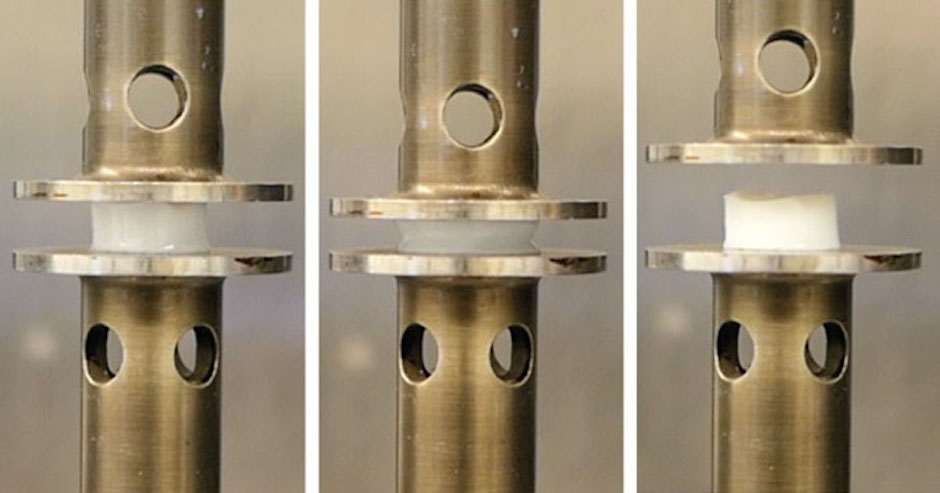New adaptive material strengthens through vibration
Scientists at the University of Chicago have developed an adaptive material inspired by bone that strengthens when exposed to vibration.

Researchers at the University’s Pritzker School of Molecular Engineering (PME) said that they were able to make the gel material 66 times stronger through vibrations in addition to being able to strengthen only the areas exposed to movement. The team believes it could lead to new adhesives and better ways of integrating implants within the body.
“Every other material becomes weaker when vibrated,” said associate professor Aaron Esser-Kahn, who led the research. “This is the first time we have reversed that process, showing that a material can strengthen itself with mechanical vibration.”
Published in Nature Materials, the study utilised the piezoelectric effect, which gives certain materials the ability to generate an electric charge in response to mechanical stress.
The researchers proposed that such a charge could instigate a reaction within a material and strengthen it, and reportedly tested ‘dozens’ of different chemistries before discovering that a polymer gel mixed with thiol-ene reactors and zinc oxide piezoelectric particles was effective.
Register now to continue reading
Thanks for visiting The Engineer. You’ve now reached your monthly limit of news stories. Register for free to unlock unlimited access to all of our news coverage, as well as premium content including opinion, in-depth features and special reports.
Benefits of registering
-
In-depth insights and coverage of key emerging trends
-
Unrestricted access to special reports throughout the year
-
Daily technology news delivered straight to your inbox










UK Enters ‘Golden Age of Nuclear’
Anybody know why it takes from 2025 to mid 2030's to build a factory-made SMR, by RR? Ten years... has there been no demonstrator either? Do RR...